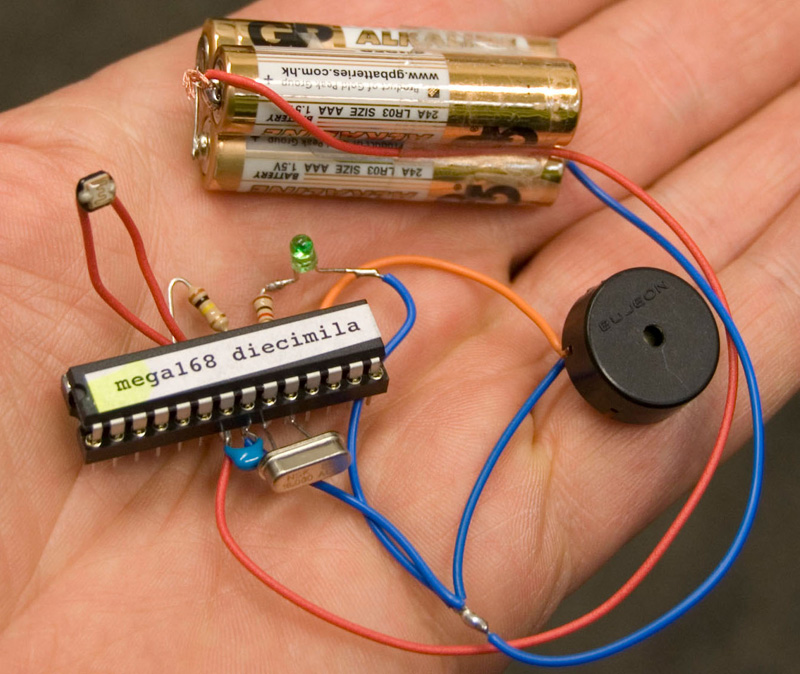This is high current 12V power supply. Power supply uses LM7812 IC and can deliver up to 30A to the load by the help of the TIP2955 pass transistors. Each transistor can handle up to 5A and six of them result an total output current of 30A. You can increase or reduce the number of TIP2955s to get higher or lower current outputs.
In this design the IC delivers about 800mA. A 1 amp fuse is connected after the LM7812 to protect the IC against high current transients.
The transistors and the 12V regulator IC both require adequate heatsinking. When the load current is high, the power dissipation of each transistor also increases so excess heat may cause the transistors to fail. Then you will need a very large heatsink or fan cooling.
100Ω resistors are used for stability and prevent current swamping as the tolerances of dc current gain will be different for each transistor.
The bridge rectifier diodes must be capable of passing at least 100 amps.
Posted on Wednesday, May 25, 2011 • Category:
Arduino
Arduino Sine wave Generator using the direct digital synthesis Method.
Here we describe how to generate sine waves with an Arduino board in a very accurate way. Almost no additional hardware is required. The frequency range reaches form zero to 16 KHz with a resolution of a millionth part of one Hertz! Distortions can be kept less than one percent on frequencies up to 3 KHz. This technique is not only useful for music and sound generation another range of application is test equipment or measurement instrumentation. Also in telecommunication the DDS Method is useful for instance in frequency of phase modulation (FSK PSK).
The DDS Method (digital direct synthesis).
To implement the DDS Method in software we need four components. An accumulator and a tuning word which are in our case just two long integer variables, a sinewave table as a list of numerical values of one sine period stored as constants, a digital analog converter which is provided by the PWM (analogWrite) unit, and a reference clock derived by a internal hardware timer in the atmega. To the accumulator , the tuning word is added, the most significant byte of the accu is taken as address of the sinetable where the value is fetched and outputted as analog value bye the PWM unit. The whole process is cycle timed by an interrupt process which acts as the reference clock. Further details of the DDS Method are described in web of course.
Posted on Wednesday, May 25, 2011 • Category:
Arduino

This example shows how to make use of the Watchdog and Sleep functions provided by the ATMEGA168 chip (decimila). These functions are useful if you want to build low power consuming devices operated by battery or solar power.
The reduced power consumption is achieved by through a intermittent operation of the system .In case of Arduino your main loop will be executed once before the system is put into the sleep mode. After a few seconds t the watchdog wakes the system up and the main loop is executed again. The ratio between main loop execution time and watchdog time determines the amount of power that will be saved.
When we assume that the time to measure a sensor and making some decisions will take 10 millisecond and the watchdog is set to 8 seconds the on/off ratio is 800 which extends the battery live time by this factor.
Posted on Tuesday, May 24, 2011 • Category:
Miscellaneous
This device is designed to measure the torque in an automobile drive shaft and provide an output to a vehicle data recording system or a portable computer via an RS-232 interface. The received data can then be combined with RPM measurements from the data recording system to calculate horsepower. It consists of the sensor unit, (Figure 1), which attaches to the driveshaft, and the receiver unit, , which provides the serial output signal. The sensor unit is battery powered and communicates with the receiver via a 433 Mhz RF data link.The receiver unit is powered by the vehicle electrical system. Circuit operation is shown in the diagram.
Circuit-Zone.com © 2007-2025. All Rights Reserved.